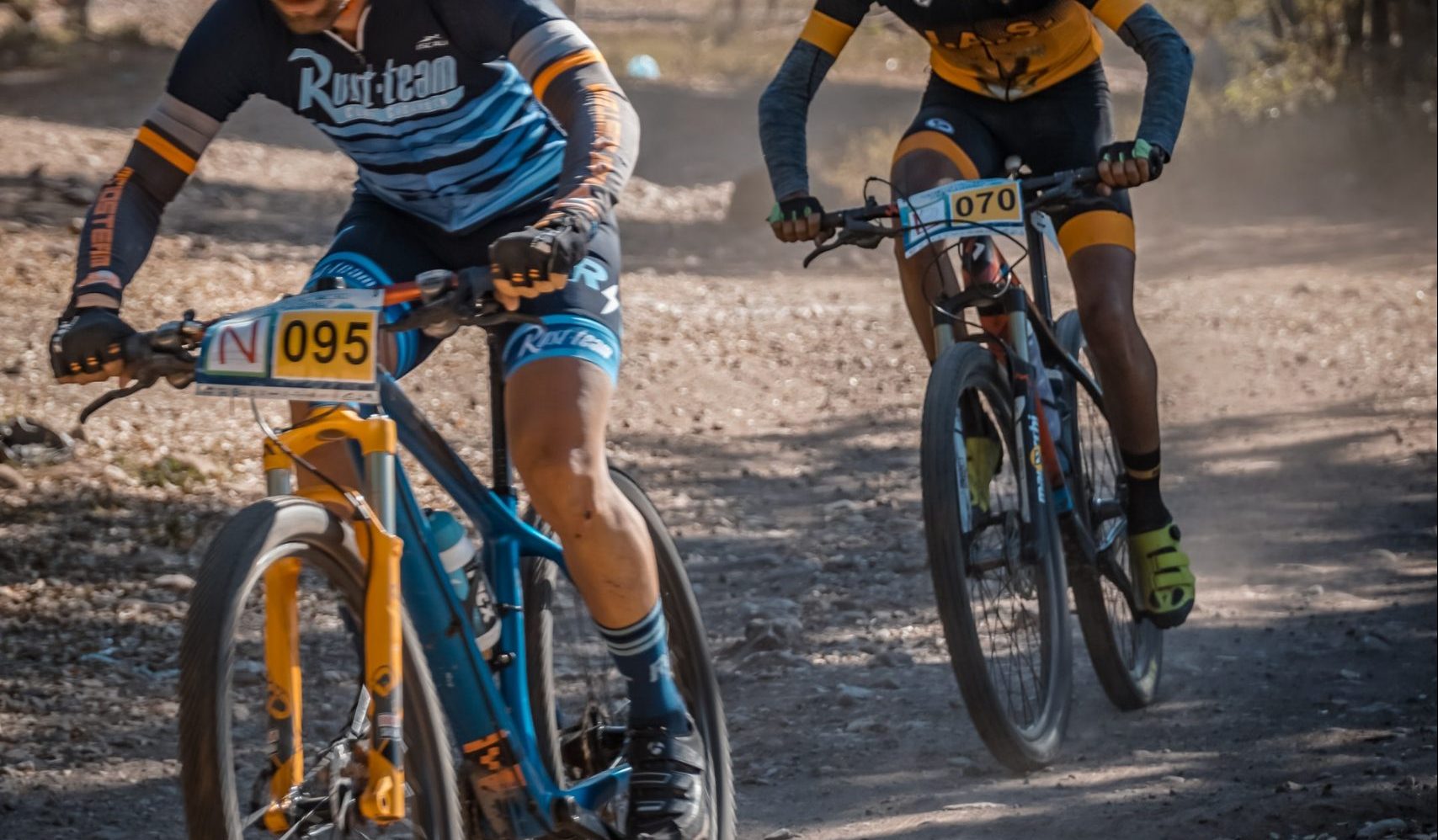After decades petitioning the International Olympic Committee (IOC), mountain bike racing finally joined the games in 1996. Its grassroots origins and spectator-friendly format eventually convinced Olympic organizers that XC racing deserved a global stage legitimizing the burgeoning sport. But the journey from renegade dirt competition to Olympic glory took serious determination as cycling’s traditionalist governing bodies initially resisted legitimacy.
Uphill Battle for Acceptance
Mountain biking originated in 1970s California across the same Marin County slopes that birthed downhill skiing a few decades prior. Modified cruiser frames with balloon tires explored rugged trails inaccessible to skinny road bikes of that era. Hardy cyclists bombing down Mt. Tamalpais dared ever steeper routes once accessible only to daring skiers when snowpack allowed.
This do-it-yourself counterculture ethos carried into organized off-road races through 80s NORBA sanctioned events formalizing new formats. Mass start head-to-head sprint rounds around forest loops demonstrated unique excitement missing from individual timed criteriums and road stage races dominating pro cycling at that time. Spills and mechanicals induced by wooded terrain and barrier jumps fueled spectator engagement too.
But road cycling’s European establishment initially rejected the legitimacy of these grassroots American conventions as gimmicky sideshows undermining the sport’s hard-earned Olympic reputation built upon feats of cardiovascular endurance and efficiency. Cross country leaders feared sharing resources diminishing support for their flagship events. Uphill progress introducing futuristic mountain bike technology faced constant resistance from tradition-loving cycling federations too.
Persistent Promotion Pays Off
In response to ongoing obstacles gaining acceptance into Olympic level competitions, mountain bike advocates formed the International Mountain Bicycling Association (IMBA) in 1988 gathering influential industry leaders and pro racers. IMBA served as lobbying voice consolidating diverse regional sanctioning bodies and manufacturers into unified presence demanding Olympic inclusion.
Once seemingly radical conventions including steep downhill timed sections paired with aerobic cross country loops got codified into Union Cycliste Internationale (UCI) guidelines by 1990. Establishing judged international point series rankings and World Cup events built further momentum showcasing growing spectator fervor for colorful athlete battles through spectacular natural terrain.
Olympic organizers took notice by the early 90s with extreme sports surging into mainstream pop culture consciousness through TV and film too. Skateboarding, surfing, snowboarding and BMX riding gained millions of new participants translating into lucrative marketing opportunities for sports brands. Mountain biking rode this momentum as cameras conveyed thrilling first-person perspectives barreling down wooded singletrack that road racing couldn’t replicate.
Seeing the writing on the wall after witnessing booming crowds at early 90s World Cup contests, IOC leadership approved a single mountain bike racing discipline for the 1996 Atlanta Summer Games – Men’s Cross Country.
Women Fight for Inclusion
Despite thousands of female participants flooding mass start XC races since the 80s, IOC officials only approved men’s categories for the initial 1996 games. But undaunted women racers and industry allies continued demonstrating equal enthusiasm and viewership potential for all athletes.
Petitions gathered support through assuming leadership roles across IMBA and UCI committees until IOC leadership relented adding Women’s XC racing by the 2000 Sydney Olympics. Fast improving equipment technology helped narrow historic gender performance gaps too by optimizing gear ratios and suspension benefiting lighter riders. This equipment parity further justified universal competing categories.
And today’s modern Olympics feature the most equitable athlete gender participation policies to date because of determined advocacy across underrepresented sports like women’s mountain biking. Inspiring role models emerging from Olympics elevation draws increased youth participation building sustainable participation protecting sanctioned trail access for future generations too.
Why Only Cross Country Racing?
Of the various competitive mountain biking race formats popularized since the 70s, Olympic status got granted exclusively to Cross Country Marathon (XCM) style riding for the 1996 games. Several key reasons led favoring its broad accessibility for global participation over gravity focused downhill racing some assumed would draw Olympic attention sooner based on exciting TV viewer engagement.
Minimal equipment requirements, widespread geographic land access, aerobic athletic conditioning translatable from road cycling, mass racing participation levels and straightforward spectating made XCM a logical foundation for building Olympic legitimacy. Most countries lacked established downhill riding venues and clubs at that time compared to bourgeoning XC scenes exploding worldwide nurtured by IMBA’s global outreach.
Broader bidding possibilities for hosting counties meant assured sustainment at future Olympics too. And self-powered non-motorized riding maintained continuity from road cycling’s ethos over feared perceptions that gravity assist diminished athletic exertions. XCM distilled competitive mountain biking to raw human effort mastering terrain that hooked fans and IOC officials alike.
Pushing for More Gravity Events
While marathon cross country racing on lugged hardtails rightly earned Olympics admission for mountain biking based on participation levels benefitting Games legacy, spectators undeniably flocked to gravity events as downhill and enduro racing captured imaginations with audacious speed and aerial maneuvers by 2000s. Building bike parks and lift accessed venues around the world feeds rider interest and visibility.
So lobbying continues demonstrating gravity racing’s eligibility for future games inclusion based on quantifiable skill mastery metrics and viewership enthusiasm that align with Olympics charter. Racing formats rewarding measured consistency across multiple timed descents could integrate with exciting freeride spectacle events showcasing progressive tricks judged for complexity, originality and execution.
Ongoing advocacy aims conveying that gravity racing’s perceived danger diminishes greatly through modern armor technology, inflated airbag landing zones and intermediate difficulty race line selections appealing from novices to experts. And formal judging qualification processes ensure impartial scoring assessed by certified professionals.
Pushing for gravity’s Olympic inclusion remains an uphill battle but winding trails lead eventually to spectacular vistas justifying the effort reaching new heights together.
Impact of Olympic Inclusion
Beyond spectacle entertainment value that Cross Country mountain bike racing brought global audiences since 1996, Olympics status strengthened infrastructure bolstering recreational trail access and participation for countless enthusiasts beyond chasing podiums. Quantifying worldwide membership figures when petitioning municipal land managers for increased trail maintenance budgets and construction permits relies upon credibility that Olympic status brings.
And exposed media coverage through Olympics broadcasts accelerated gear technology too allowing safer obstacle progression. Suspension systems, durable component groups, grippy tire compounds and sophisticated bike geometry decisions distilled from pro racer product development feedback rapidly improves beginner models as well. Olympics proven “halo effect” benefits enthusiasts across disciplines.
While plenty of dedicated cyclists logged backcountry miles absent chasing accolades decades before medal dreams, increased participant numbers and formal venues enabled through Olympics legitimacy protects beloved outdoor access for all into the future. It takes a tribe to transform renegade competitive origins into sustainable global spectacle sport.


